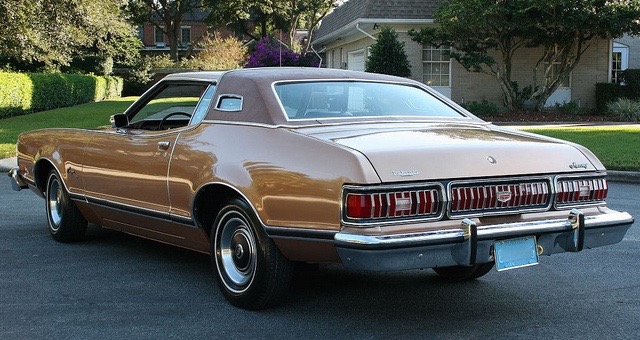For mid-1970s American cars, opera windows were small windows placed on C-pillars so that distinguished back-seat passengers on their way to cultural events presumably could discretely peek out at the unwashed masses along the way. Actually, I doubt that was ever the intent; the real intent was to add a bit of retro-sophistication to certain car models.
One thing I find a little puzzling is that they appeared in classical form on 1973 Lincolns while in the same model year some General Motors cars introduced somethings fairly similar in spirit. Those were small rear-quarter windows that could be interpreted as large opera windows. I suspect the reason for this same-year introduction by two different firms had to do with the usual auto industry grapevine along with reports from stylists hired from competing companies.
By the late 1970s every American car maker was selling some models with some sort of opera window feature. And opera windows rapidly disappeared on 1980s models.
Below is a gallery showing some of those opera windows.
1973 Lincoln Continental Mk. IV - Barrett-Jackson auction photo
An early instance on Ford's luxury brand. The small oval window can be seen on the C-pillar.
1978 Lincoln Town Car - auction photo
Five years later there is one on a Lincoln four-door sedan. Most cars featuring opera windows or something similar were two-door models.
1974 Mercury Cougar XR-7 - sales photo
Here is a squared-off opera window.
1977 Ford Thunderbird Coupe
An unusual variation is the small window on this Thunderbird's B-pillar.
1977 Ford Granada Sports Coupe
And then there are the louvered slit windows on this small Ford.
1973 Chevrolet Monte Carlo
The same year as the Lincoln in the top photo General Motors placed small quarter windows on this body used by several of its brands.
1978 Buick Riviera Coupe
Five years later we find a smallish quarter window surrounded by vinyl.
1975 Chrysler Cordoba
Chrysler did the same thing for its Cordoba.
1977 Chrysler New Yorker
An interesting variation on this New Yorker. Note the unusual shape of the roof vinyl covering and the large C-pillar zone.
1975 Dodge Charger - auction photo
This Dodge has slotted opera windows. Stylists seemed to be working overtime to come up with distinctive variations on the concept, as these images indicate.
1977 Plymouth Gran Fury Brougham
Chrysler's entry-level brand got a scaled-down version of opera window and vinyl shape as compared to the New Yorker shown earlier.
1978 AMC Concord D/L
Even American Motors, the smallest car maker, felt the need to join the opera window rush.


















